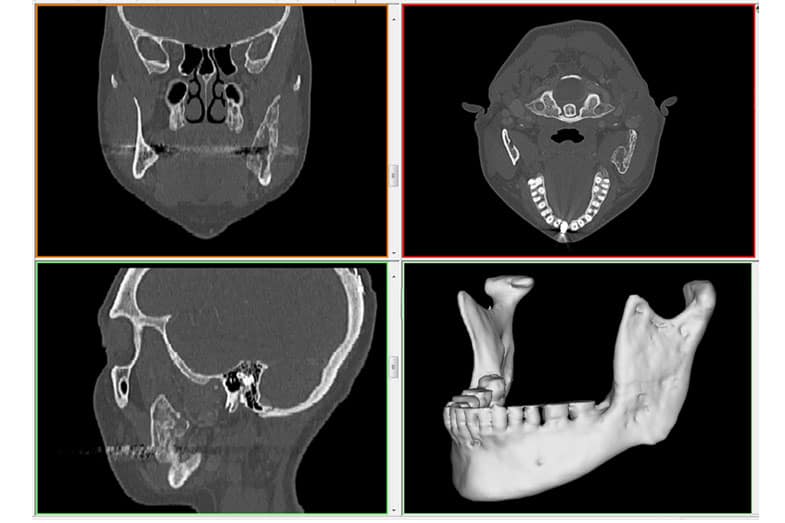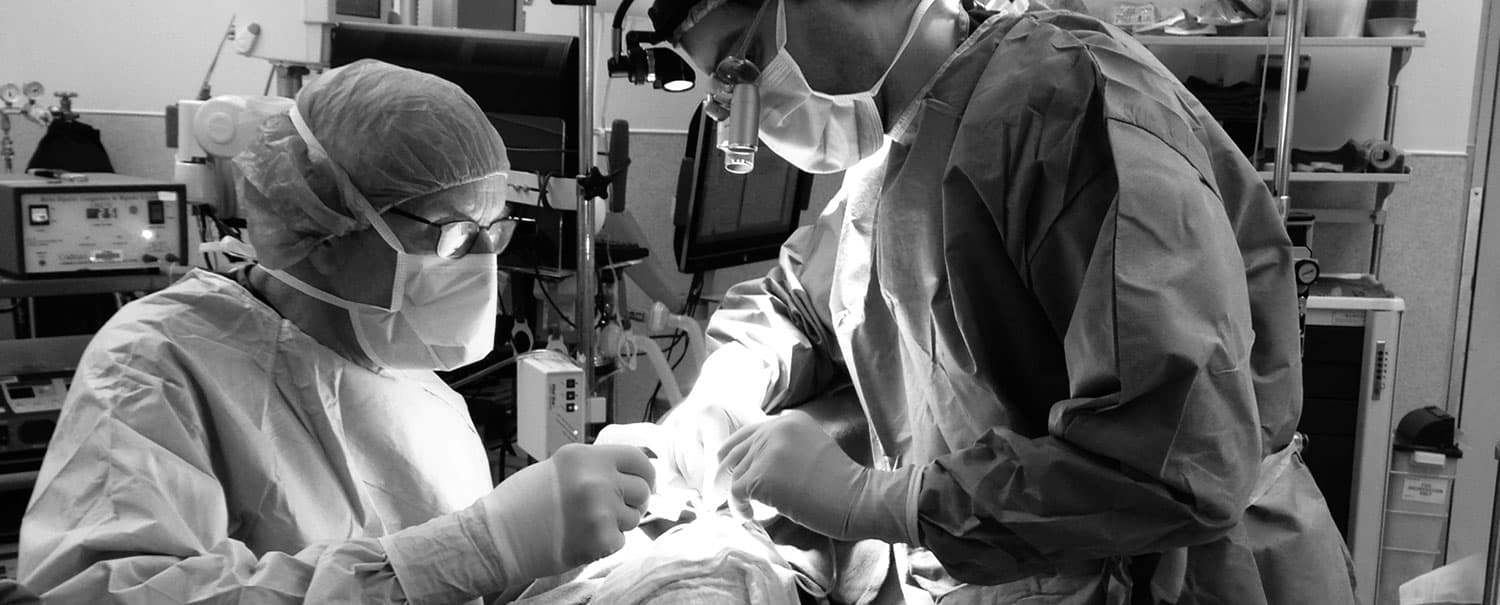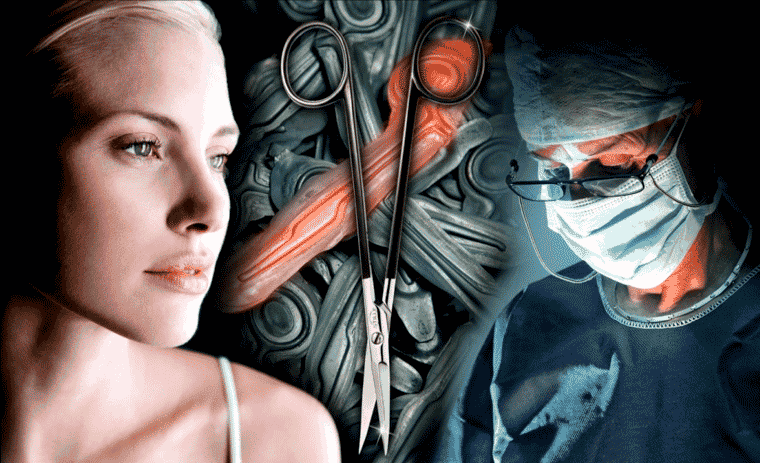Facial feminization is an aggressive remodelling of every aspect of the facial skeleton. A mere facelift won’t do it—saws are involved, along with burrs to whittle down bones. A typical operation can last up to 12 hours. But for these patients, it’s worth the risks, the pain, and the high five-figure price. “As a transgender individual, perhaps nothing is more vital to you than having a body that matches how you feel,” wrote Douglas K. Ousterhout in his 2009 book, Facial Feminization Surgery: A Guide for the Transgendered Woman (Addicus Books).
Semi-retired now, Ousterhaut is the San Francisco plastic- and cranio-facial surgeon who pioneered the specialty in 1982, after his first transgender patient asked for help. “Dr. O has done more than 2,000 of these surgeries,” says his associate and hand-picked successor, Jordan Deschamps-Braly, who did not do Jenner’s surgery. It’s been widely reported that two L.A surgeons, Harrison Lee, a maxillo-facial surgeon, and Gary Alter, a urologist and plastic surgeon, together performed Jenner’s facial transformation, breast augmentation, and other unspecified body procedures.
In the 1980s, facial feminization was unchartered territory. To plan his first operation, Ousterhaut, who had devoted 25 years to pediatric birth defects, first studied the 1,500 human crania in the Atkinson Skull Collection at the University of Pacific School of Dentistry, comparing male and female bone structure. His work eventually became the basis of a whole new surgical specialty. We don’t know exactly what procedures Jenner underwent, but the following is Ousterhaut and Deschamps-Braly’s menu of the most important feminization procedures—and a tiny snapshot of what’s involved. (Warning, what follows is not for the squeamish.)
Advancing the Scalp. A high forehead is an instant clue of maleness. Creating a lower hairline and recontouring the brow are procedures that must be done together, says Deschamps-Braly. In a 19-year-old male, the distance from hairline to the center of the eyebrow is 2.6 inches; it’s just two inches in a woman. Lowering the hairline with scalp advancement requires an ear to ear incision across the top of the head. The scalp is then pulled forward and reattached lower down. If the hair in the front section of scalp is thinning, a strip of it is trimmed away. Hair-follicle implants can be done later. Before the scalp is sutured into place at the lover level, the brow is raised lifting the eyebrows to a more feminine position.
Forehead feminization. The skulls of men and women are vastly different. “The foreheads of genetic males slope back—while a female brow is more vertical. Genetic males have a heavy bony ridge protruding above the eye sockets making the sockets deeper than a woman’s,” explains Deschamps-Braly. “We use a saw and remove the ridge carefully, often exposing the sinus cavity which we refill with some of the extra bone.” Males also have bony hoods over their eye sockets. To feminize the eyes, these need to be removed with a 40,000 rpm mechanical burr. A small percentage of facial feminization patients need their brows augmented above the brow ridge with the same synthetic resin used in making dentures. All this bone work can be done through the same long incision created for the brow advancement. “Without feminization, your forehead will always be a giveaway to your birth gender,” wrote Ousterhaut.
Filling temple depressions. Some men also have shallow depressions in the bone beside their eyes. If they’re noticeable, fat can be injected through small entry points in the temple hair.
Rhinoplasty. Jenner had previously had surgery on her nose, which is a common element in the facial feminization process. Male noses are larger and longer, with bulkier tips than a woman’s. They point straight ahead or down, while the ideal female nose is thinner, shorter and sometimes scoops up.The angle at the radix (where the nose meets the forehead) is sharper in males and slopes gently in females. These characteristics can be achieved with surgery.
Changing the shape of the chin. A man’s chin is 17 percent longer than a woman’s and wider as well. A woman’s chin tends to be tapered or oval. Feminization requires taking, on average, a three-eighths-inch horizontal slice out of the chin bone (think of it as removing one book near the bottom of a stack). The bottom piece has to be anchored with plates and screws. If the chin protrudes or is receding, the lowest section can be pushed back or advanced. If the chin needs narrowing, a vertical wedge of bone can be removed at the tip below the tooth roots.
Lower-jaw tapering. The male jaw looks square from the front, but it has a wide, V-shaped bend between the ear and the chin. In contrast, a female jaw has a soft curve from the ear to the chin. The angular male jaw can be rounded by cutting the sharpness from the bend with a right-angle saw and smoothing the edge with a mechanical burr. This is a job for someone very experienced, because running through the jaw are blood vessels and nerves that relay sensation from the lower lip, front teeth, and chin.
Diminishing the Adam’s apple. The Adam’s apple is thyroid cartilage that sits on top of the trachea—the breathing tube—and anchors the vocal cords. Both men and women have one, but a man’s is more prominent. It can be reduced through a small incision under the chin that heals almost invisibly. In 5 percent of cases, male-to-female transgender patients (like Jenner) have it reduced before feminization surgery; Jenner underwent a tracheal reduction in January of 2014.
Raising the cheeks. While rounded cheeks are considered attractive in both men and women, Deschamps-Braly cautions against using cheek implants during the feminization surgery. “I do a cheek lift instead of implants. The cheek looks better. Implants are rarely necessary.”
Shortening lip height. Men typically have a longer upper lip area, averaging 21 millimeters in height compared to 15 millimeters for women. And it gets longer with age. This can be shortened with a short incision right under the nostrils. Lips can then be filled with dermal fat or hyaluronic acid.
Vocal pitch. This is one male trait that isn’t easy to change. Operating on vocal cords to make the voice less husky is risky. It could become deeper and chronically hoarse. “There have been great successes,” says Deschamps-Braly, “but the area is a no-man’s land and complications can’t be corrected.” For this reason, many male-to-female transgender patients skip the surgery and instead hire voice coaches to help them.
Jenner’s surgeon, Harrison Lee, told E! News that his patient had recovered quickly from her March ordeal. “She healed remarkably fast,” Lee said. “Maybe because she’s an Olympic athlete… I mean, at 65, she is in remarkable health.” The full healing process can take up to a year.
Jenner did tell Bissinger that her one moment of serious doubt came shortly after the grueling procedure. She had a panic attack—the first of her life—and thought to herself “What did I just do? What did I just do to myself.” A counselor from the Los Angeles Gender Center came to Jenner’s house and explained that such reactions are common and often temporary, induced in part by pain and medication. Deschamps-Braly agrees that few patients regret their surgery in the long run, despite the difficulties involved. “The operation is something they have longed for. In no time at all, they forget what they looked like [before],” he says. “Looking believably female is important. There’s a sense of relief. You can’t hide your face. There is less discrimination. Facial feminization surgery gives them a foundation.”
Download copy of the article
For more information, or to make an appointment with Dr. Deschamps-Braly, please contact our San Francisco office +1.415.624.3922.







